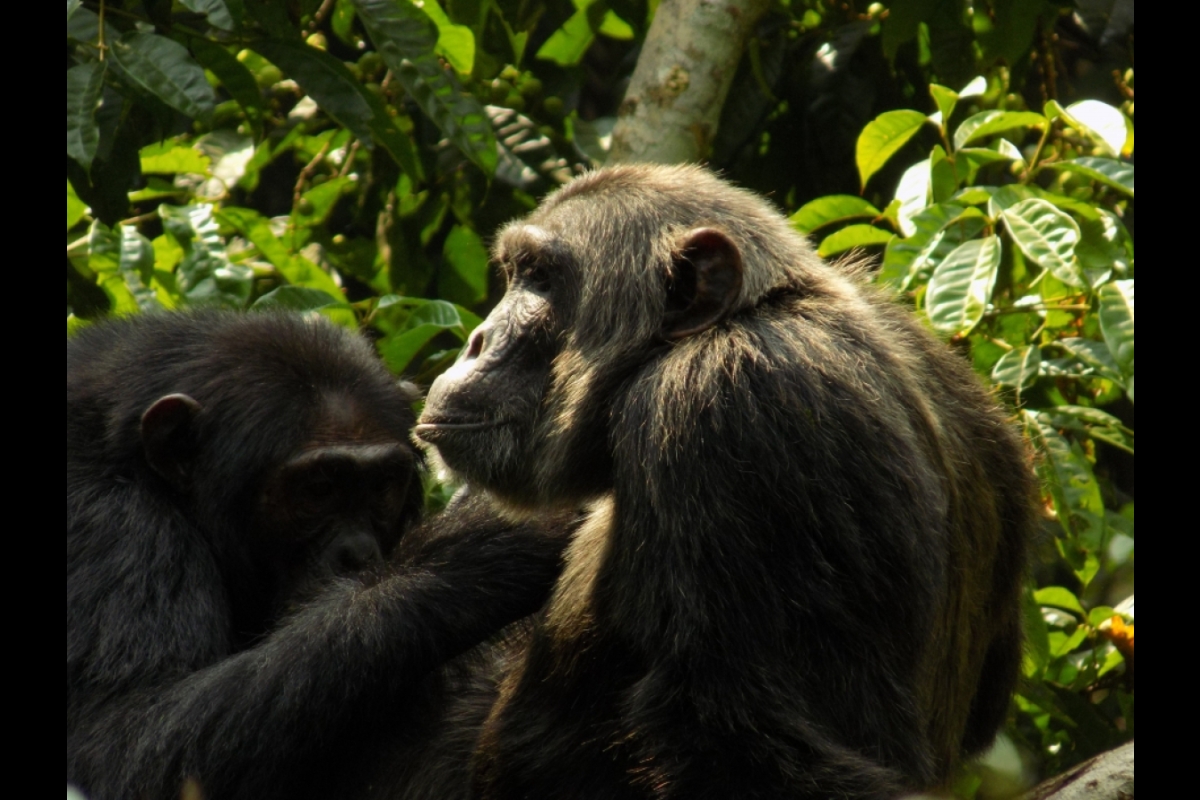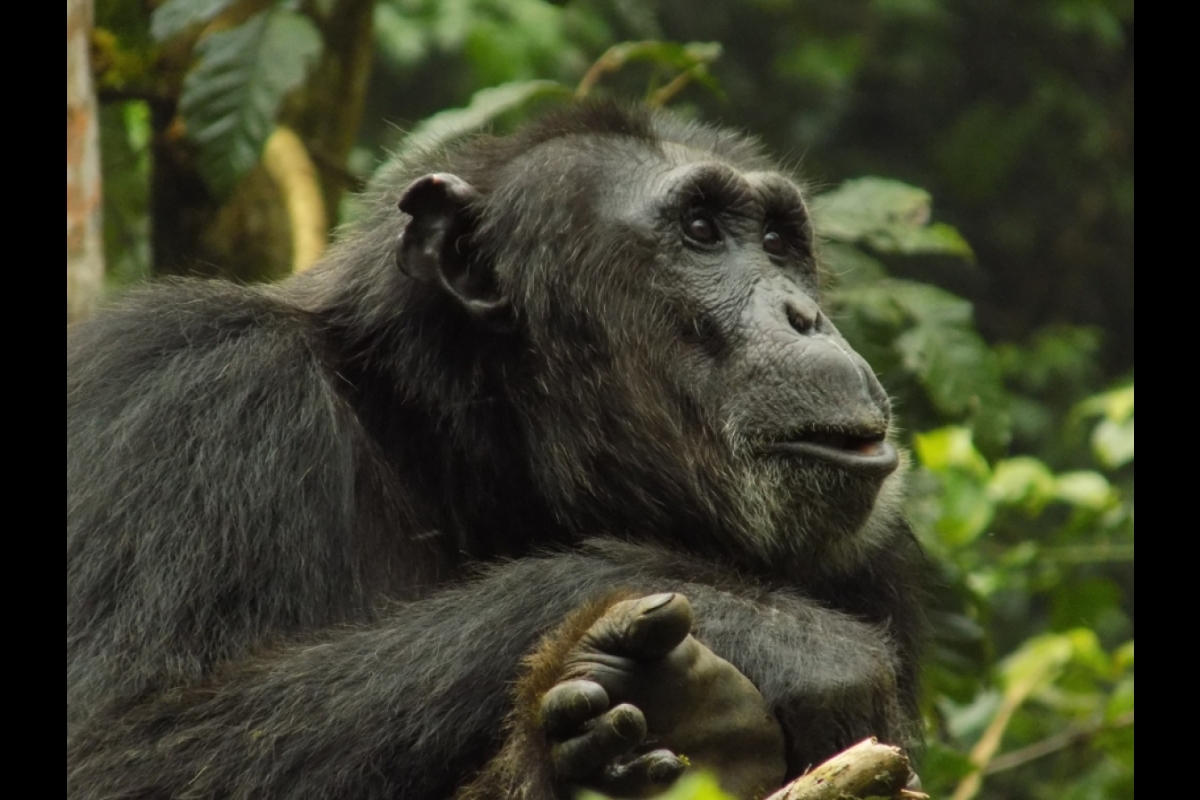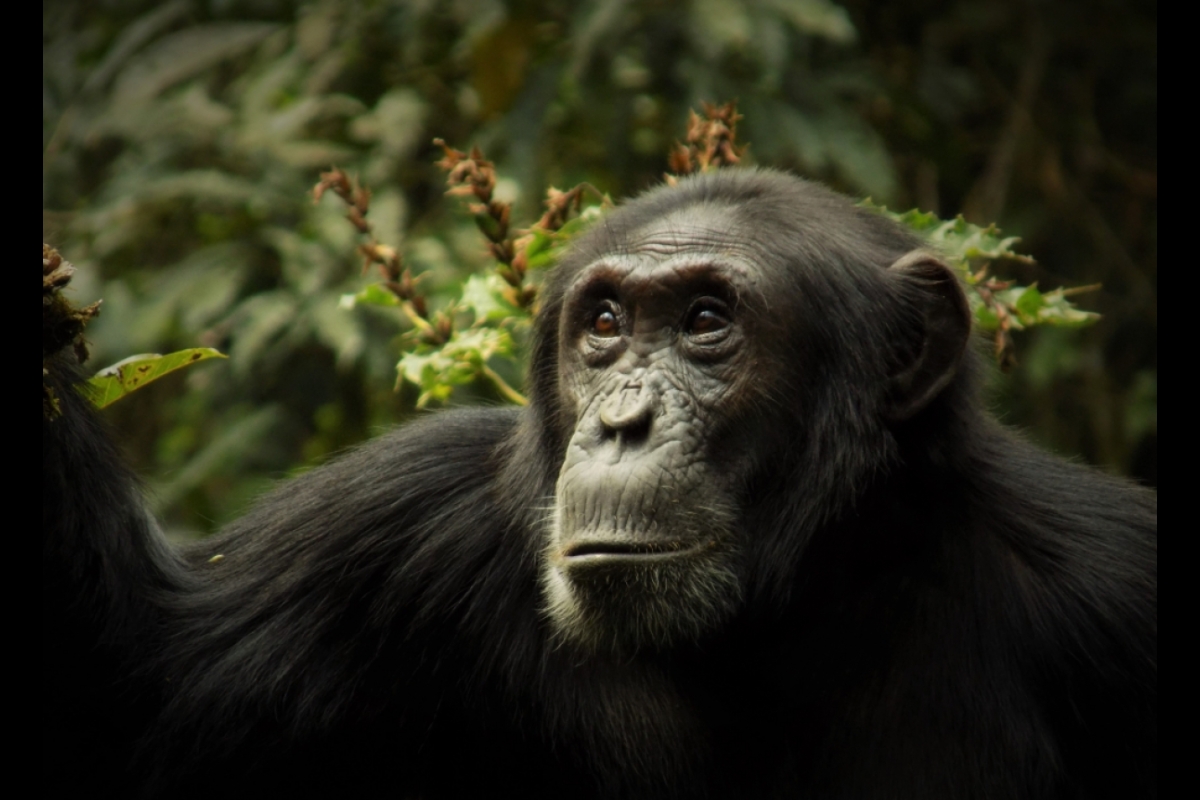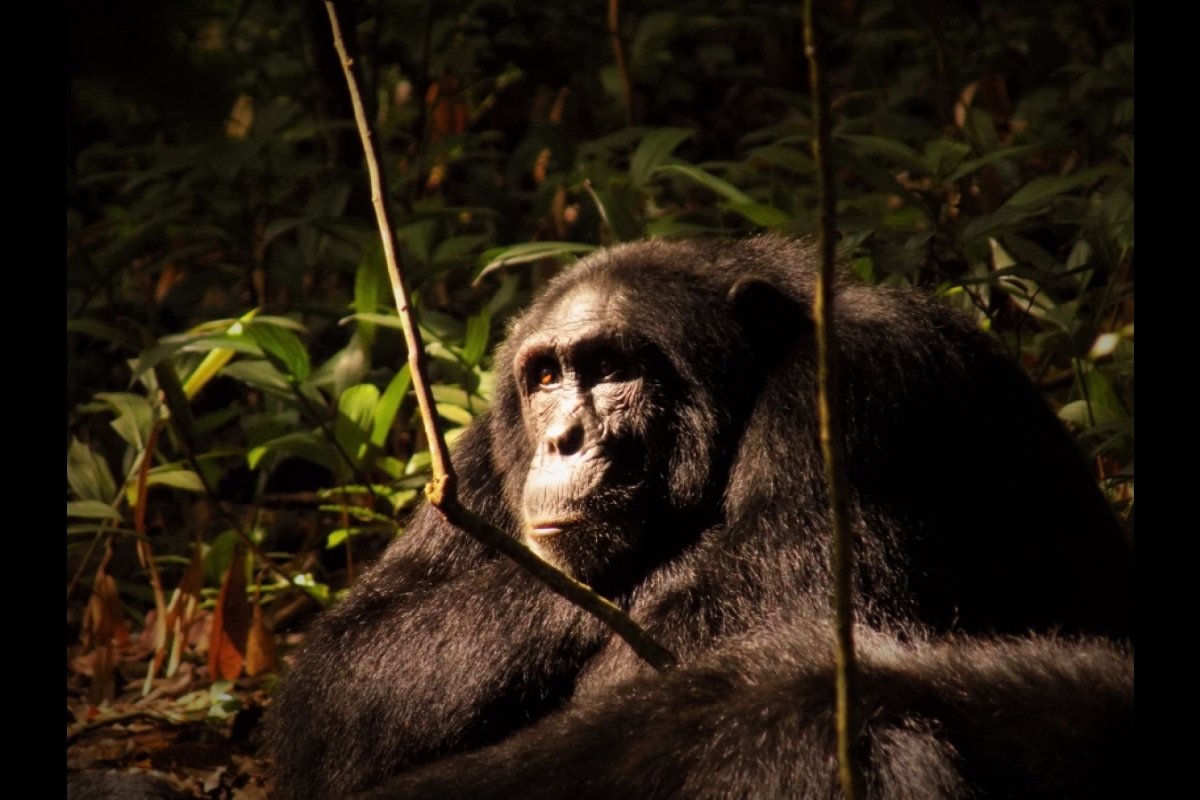ASU study: Chimpanzees with more muscle, not more aggression, have higher testosterone
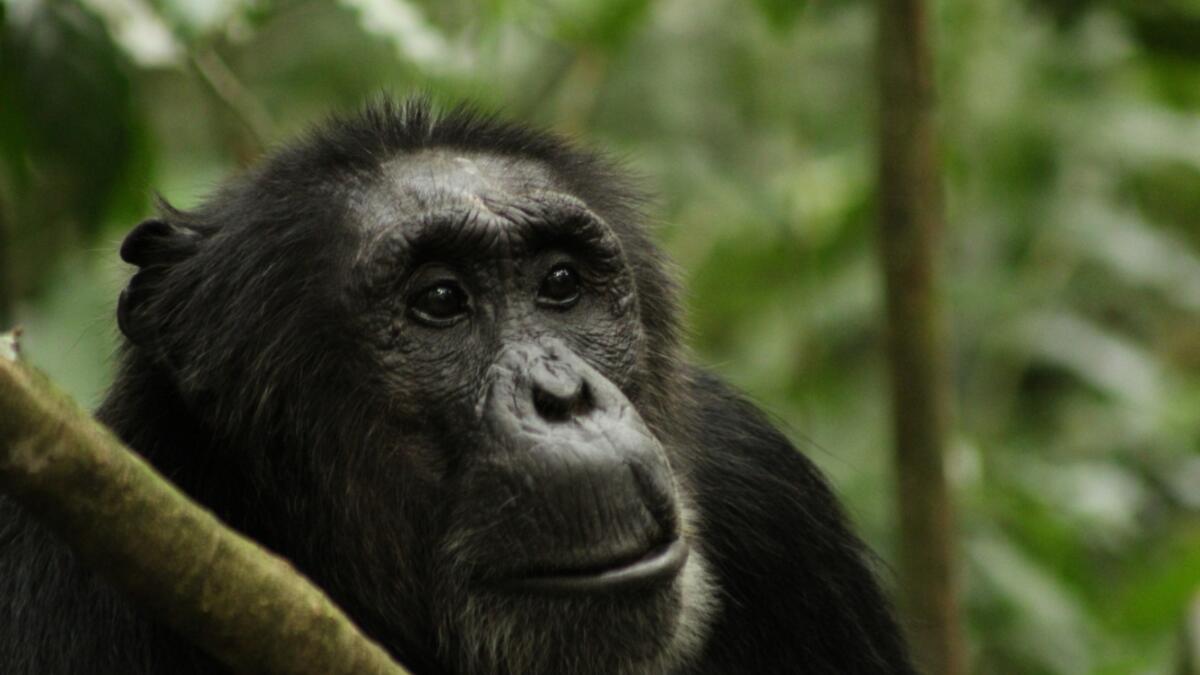
An adult male Ngogo chimpanzee at Kibale National Park, Uganda. Photo by Jacob Negrey
New research by a team of primatologists at Arizona State University is dispelling some myths about testosterone and aggression in primates. The team found that more testosterone does not mean more aggression in wild chimpanzees.
“Males (chimpanzees) with greater lean muscle mass were higher ranking and had higher testosterone but were not more aggressive,” said Jacob Negrey, a postdoctoral research scholar with the School of Human Evolution and Social Change. “We didn't find an association between muscle mass and aggression rates.”
“More aggressive chimps are generally higher ranking, but more aggressive chimps don't have higher testosterone levels or muscle mass.”
Negrey worked with Kevin Langergraber, an associate professor at the School of Human Evolution and Social Change and the Institute of Human Origins, as well as researcher Tobias Deschner with Osnabrück University, on the project.
The team and field assistants analyzed urine and social behavior from male Ngogo chimpanzees living in Kibale National Park, Uganda, for 18 months. Negrey explained that they had to collect the urine from leaves or bags they hold under the chimpanzees. Scientists then measured creatinine found in the urine to determine the lean muscle mass of each primate.
“We also watched how the chimps interact with each other,” Negrey said. “When they engaged in aggression, scientists marked who was involved and what kind of aggression it was. After all the hours of data were collected, we returned to our labs, and we controlled for the amount of time that the individual chimpanzee was observed.”
Jacob Negrey
Negrey said aggression can include chasing or physical assaults that last more than 30 seconds, called “bouts.” Researchers quantify how aggressive individual chimpanzees are by taking the total number of bouts and dividing that by the amount of time the chimpanzee was observed.
“We used a lot of behavioral data in this study — more than 5,000 hours of observation and more than 900 bouts of aggression — so we have high confidence that our data captures each individual chimpanzee's relative aggressiveness.”
Rank is a measure of social status in the chimpanzee world, Negrey said. One way to measure rank is by recording vocalizations called “pant-grunts” from the chimpanzees. Subordinate chimps will pant-grunt to dominate chimps.
The team hopes more research will be conducted with testosterone in primates and even humans.
“I’m hoping that our results will encourage scientists to take a step back and say, ‘What are we not controlling for in our analysis? What are we not considering?’" Negrey said.
“I think there is a direct plea within our study to encourage scientists to look at physical attributes, to look at body composition as a critical aspect of their studies of testosterone. I am sure that body composition is a confounding factor in a lot of these analyses. And a lot of them have not taken this into account.”
“Lean muscle mass, not aggression, mediates a link between dominance rank and testosterone in wild male chimpanzees” is published in Animal Behavior and free for the public for the next 50 days.
More Arts, humanities and education
AI literacy course prepares ASU students to set cultural norms for new technology
As the use of artificial intelligence spreads rapidly to every discipline at Arizona State University, it’s essential for…

Grand Canyon National Park superintendent visits ASU, shares about efforts to welcome Indigenous voices back into the park
There are 11 tribes who have historic connections to the land and resources in the Grand Canyon National Park. Sadly, when the…
ASU film professor part of 'Cyberpunk' exhibit at Academy Museum in LA
Arizona State University filmmaker Alex Rivera sees cyberpunk as a perfect vehicle to represent the Latino experience.Cyberpunk…

